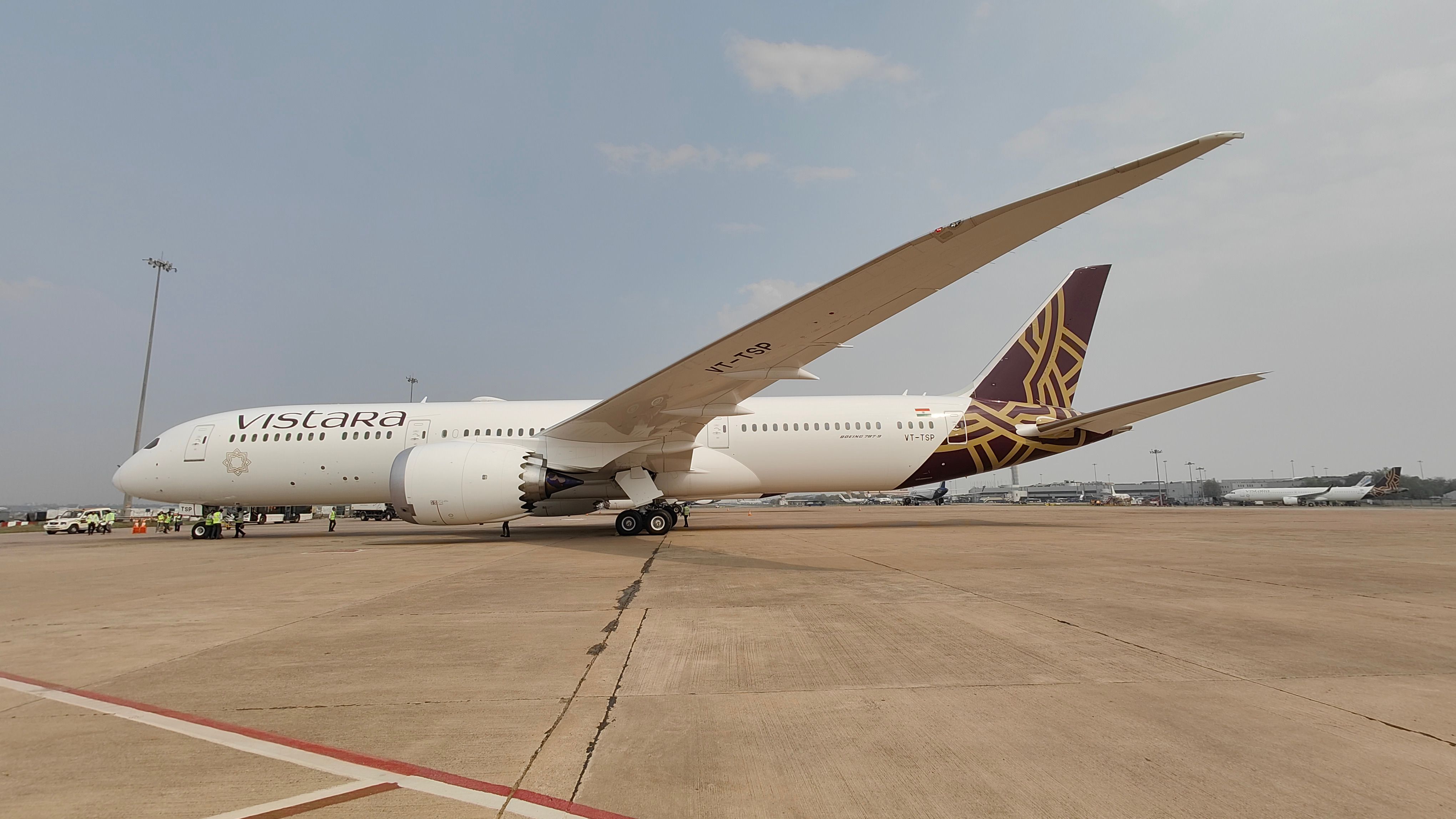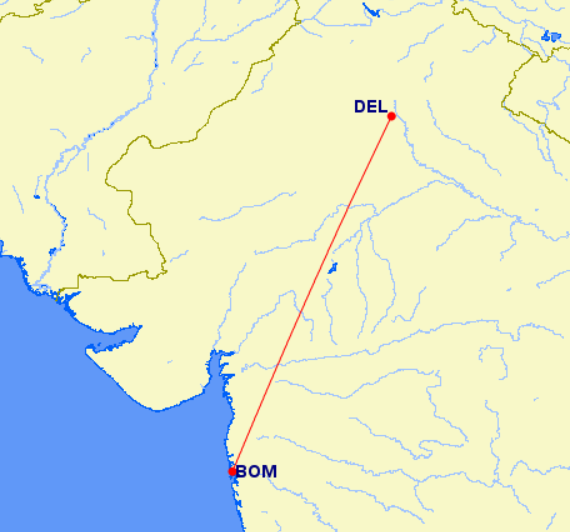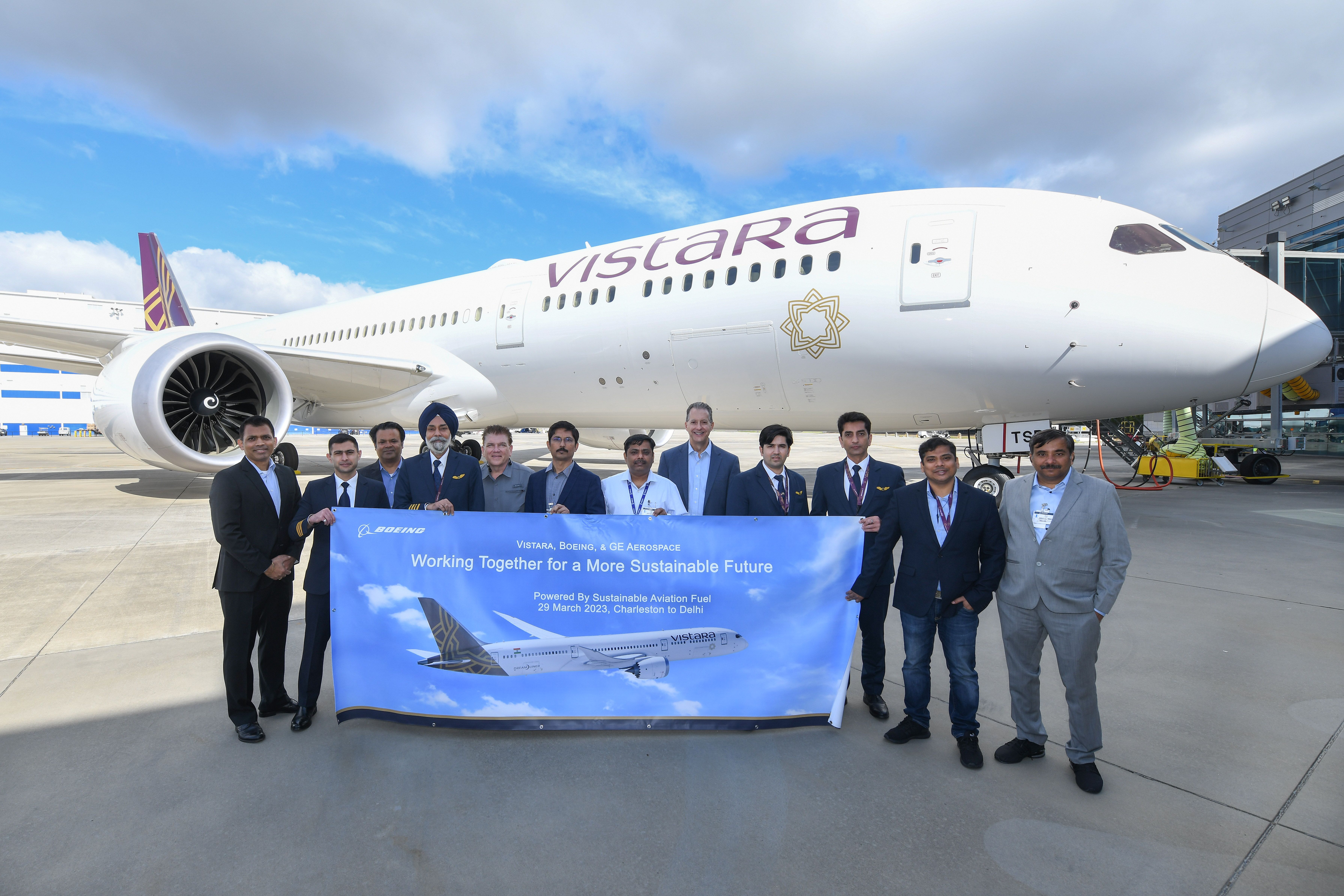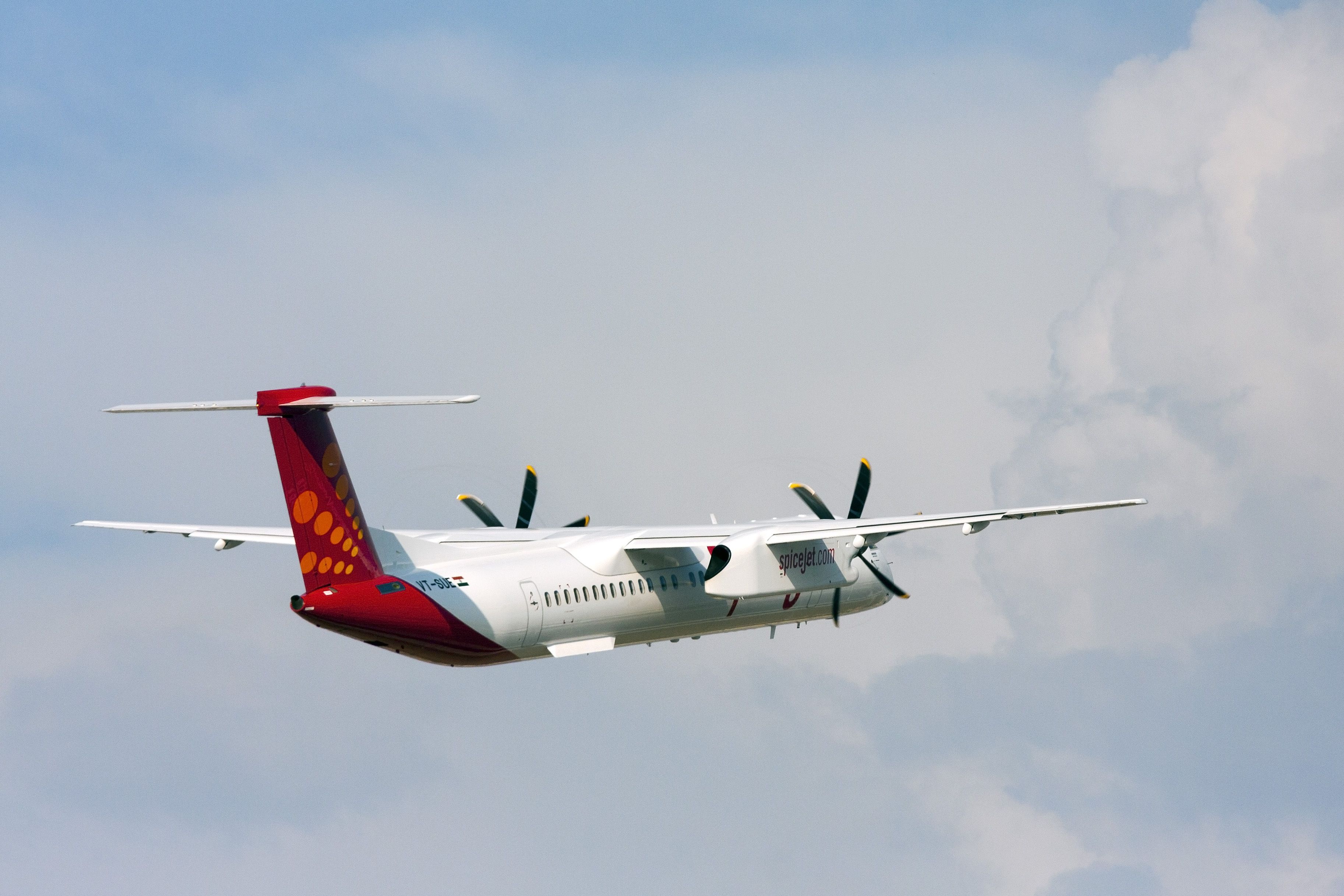India’s full-service airline Vistara recently operated a domestic flight using its Boeing 787 Dreamliner aircraft powered by a blend of sustainable aviation fuel (SAF) and traditional fuel. While other flights in the country have used SAF, Vistara’s was the first commercial service on a widebody plane.
SAF-powered widebody flight
On May 4th, Vistara operated a commercial, domestic flight on a widebody aircraft using sustainable aviation fuel (SAF), becoming India’s first airline to do so. The carrier used its new Boeing 787 Dreamliner for the flight between Indira Gandhi International Airport, Delhi (DEL), and Chhatrapati Shivaji Maharaj International Airport, Mumbai (BOM).
The flight used a blend of 17% SAF with 83% conventional jet fuel and reduced approximately 10,000 pounds of CO₂ emissions. Vistara is keen on minimizing its carbon footprint, keeping up with the global trend of the aviation industry moving towards a sustainable future. Vinod Kannan, Chief Executive Officer, Vistara, commented,
“We have always been committed to driving sustainability and innovation in aviation, and are delighted to carry out yet another industry-first initiative of operating a commercial flight on a wide-body using SAF. We are thankful to our partners and the relevant authorities for their support.”
Not its first SAF flight
While the recent flight was a significant step in Vistara’s SAF journey, it wasn’t its first SAF-powered flight. Last month, when the airline took delivery of its fourth 787 Dreamliner, it made the ferry flight from the US to India a little special.
Get the latest aviation news straight to your inbox: Sign up for our newsletters today.
It was, in fact, the first time an Indian carrier operated a widebody aircraft using sustainable aviation fuel on a long-haul route when it ferried the plane from Charleston International Airport, South Carolina, to Indira Gandhi International Airport, Delhi. Along with Boeing, the flight partnered with GE Aerospace, which provided the plane’s newest GEnx engines.
Gradual adoption
Indian airlines are yet to introduce SAF in commercial operations regularly. So far, occasional flights have used a blend of sustainable fuel. The first such flight occurred in 2018 when SpiceJet operated India’s first test flight powered by biofuel. The nearly 45-minute flight from Dehradun to Delhi was made using a Bombardier Dash 8 Q400 aircraft.
Check out more Indian aviation news here.
Recent efforts include three airlines under the Tata Group - Air India, AirAsia India, and Vistara - signing a Memorandum of Understanding (MoU) with the Council of Scientific and Industrial Research - Indian Institute of Petroleum to collaborate and work on the research, development, and deployment of SAF.
There are also talks of Indian Oil Corporation planning to set up a joint venture with US-based LanzaJet Inc and some Indian carriers for SAF production.
What are your views on this? Please leave a comment below.




